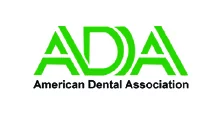Cheek-biting is a common dental concern that can cause discomfort and lead to oral health issues if left unaddressed.
At Kenneth Hovden DDS in Daly City, California, we recognize the importance of understanding and addressing this issue to ensure our patients’ overall oral well-being.
What is Cheek-Biting?
Cheek-biting, also known as cheek chewing or morsicatio buccarum, occurs when individuals inadvertently bite the inside of their cheeks. This habit can be triggered by stress, anxiety, misaligned teeth, or habitual behaviors, such as chewing on pens or pencils. It can also be accidental based on chewing speed or a reaction to food shape or texture.
Effects of Cheek-Biting
Cheek-biting can lead to various dental and oral health problems, including:
Soft Tissue Damage: Repeated biting can cause injuries to the delicate lining of the cheeks, resulting in pain, inflammation, and the formation of mouth sores.
Chronic Discomfort: Persistent cheek-biting may lead to chronic discomfort and interfere with eating, speaking, and other daily activities.
Increased Risk of Infection: Injured tissues are more susceptible to infection, which can further exacerbate discomfort and compromise oral health.
Addressing Cheek-Biting
At Kenneth Hovden DDS, we offer personalized solutions to help patients overcome cheek-biting habits and mitigate their effects:
Behavioral Modification: Our team works closely with patients to identify triggers and develop strategies to modify behaviors contributing to cheek-biting, such as stress management techniques or oral habit awareness exercises.
Orthodontic Evaluation: Misaligned teeth or bite issues can contribute to cheek-biting. We conduct comprehensive orthodontic evaluations to assess the alignment of teeth and jaws and recommend appropriate treatments, such as braces or clear aligners, to correct underlying issues.
Protective Measures: In cases where cheek-biting is primarily nocturnal or subconscious, we may recommend the use of custom-made mouthguards or dental appliances to provide a protective barrier and prevent further injury to the cheeks.
Preventive Measures
While addressing cheek-biting habits is essential, practicing preventive measures can also help minimize its occurrence:
Stress Management: Incorporating stress-reduction techniques, such as mindfulness meditation or relaxation exercises, can help alleviate anxiety-related triggers for cheek-biting. In some cases, just slow down a bit.
Oral Hygiene: Maintaining good oral hygiene habits, including regular brushing, flossing, and dental check-ups, can help prevent complications associated with cheek-biting, such as infection or inflammation.
Cheek-biting can have detrimental effects on oral health and quality of life, but with proactive intervention and preventive measures, it can be effectively managed.
At Kenneth Hovden DDS in Daly City, California, our dedicated team is committed to providing comprehensive care and personalized solutions to help our patients achieve optimal oral health and well-being. If you or a loved one are experiencing issues related to cheek-biting, we encourage you to schedule a consultation with us to explore treatment options and regain comfort and confidence in your smile.
Contact Kenneth Hovden DDS:
650-755-6000
Location (Tap to open in Google Maps):
901 Campus Dr Ste 202
Daly City, California
94015










